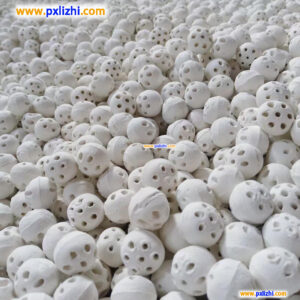
Benefits of Inert Ceramic Balls
Inert ceramic balls are highly valued for their exceptional durability and chemical stability. These properties make them ideal for use in harsh environments where other materials might degrade. They provide excellent thermal resistance, ensuring consistent performance even under extreme temperatures. Additionally, their high mechanical strength reduces breakage and extends service life, leading to lower maintenance costs.
Chemical and Thermal Stability
One of the standout features of inert ceramic balls is their ability to withstand corrosive chemicals and high temperatures. This makes them suitable for applications in petrochemical, refining, and chemical processing industries. Their inert nature prevents unwanted reactions, ensuring product purity and process efficiency.
Applications Across Industries
Inert ceramic balls are versatile and used in various sectors. In the oil and gas industry, they serve as catalyst bed supports in reactors, improving flow distribution and protecting catalysts. The environmental sector utilizes them in scrubbers and adsorption towers to remove pollutants. They are also common in thermal storage systems and as grinding media in mills.
Supporting Catalysts and Filtration
These balls act as reliable supports in catalytic processes, preventing catalyst clogging and enhancing reaction efficiency. In filtration systems, they help remove impurities from gases and liquids, ensuring cleaner outputs and compliance with environmental standards.
Selection Tips for Optimal Performance
Choosing the right inert ceramic ball depends on factors like size, composition, and operating conditions. Smaller balls offer higher surface area for reactions, while larger ones are better for supporting heavy loads. Alumina-based balls excel in high-temperature settings, whereas steatite types are cost-effective for less demanding applications. Always consider abrasion resistance and pressure drop requirements.
Sizing and Material Considerations
Accurate sizing ensures efficient packing and minimal void spaces, optimizing process outcomes. Material selection should align with chemical exposure; for instance, high-alumina balls resist acids better. Consulting with experts can help match specifications to your needs.
Frequently Asked Questions
What are inert ceramic balls made of?
They are typically composed of alumina, steatite, or zirconia, chosen for their inert properties and strength.
How do I clean inert ceramic balls?
Use mild detergents or thermal regeneration methods, avoiding harsh chemicals that could cause damage.
Can they be reused?
Yes, their durability allows for multiple uses after proper cleaning and inspection for wear.
Take Action Today
Ready to enhance your industrial processes? Explore our premium range of inert ceramic ball solutions tailored for durability and efficiency. Contact us for a customized consultation and see the difference in performance!